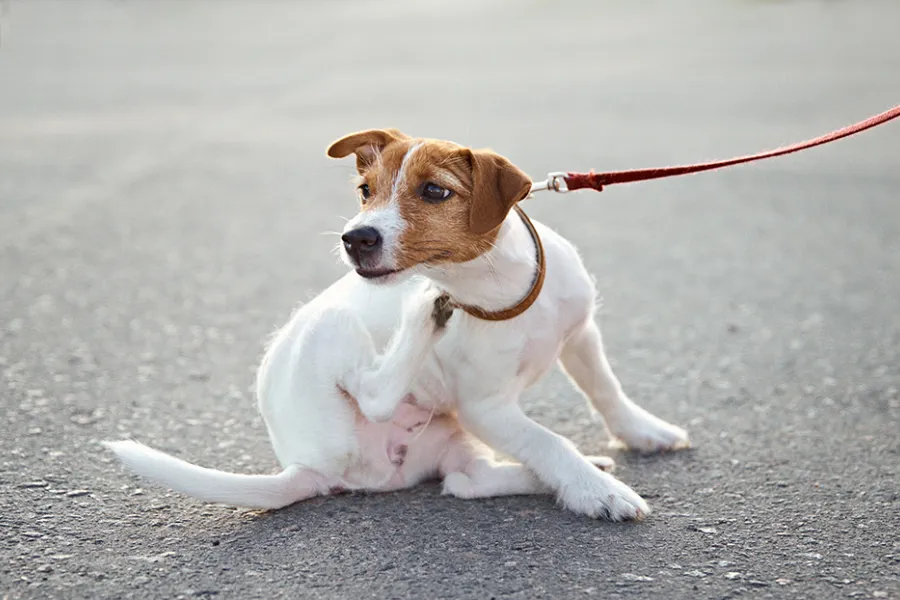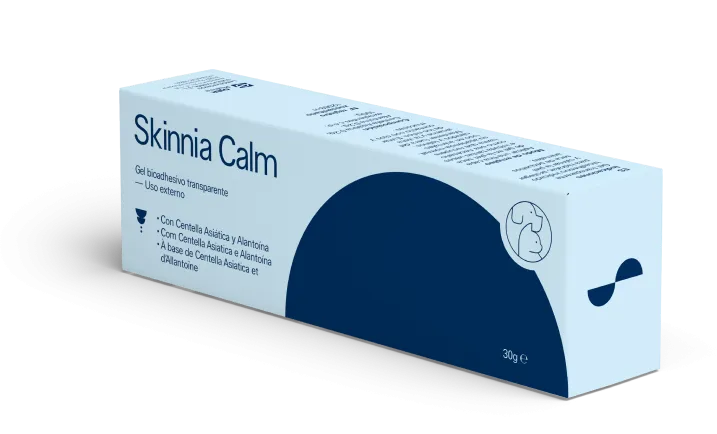PATHOLOGIES WE TREAT
Pediculosis (Lice)

Introduction
Lice are external parasites that live on the fur and skin of animals. These small, wingless insects feed on either skin or blood, depending on the type of lice. The most common types of lice in pets are:
- Chewing lice (Mallophaga): Feed on skin cells and hair, primarily affecting dogs.
- Sucking lice (Anoplura): Feed on blood and are more common in cats.
It is important to note that lice are species-specific, meaning lice from pets do not infest humans and vice versa.
Causes
Lice infestations in dogs and cats typically occur through direct contact with infected animals, as lice do not survive long off their host. Infested environments, such as contaminated bedding, blankets, or grooming tools, can also be sources of transmission, especially in overcrowded or unhygienic conditions. Pets that do not receive regular care are at a higher risk of infestation.
Symptoms
Pediculosis presents with itching and skin irritation, prompting animals to scratch, rub, or bite themselves. Common signs include:
- A rough or unhealthy coat appearance.
- Severe infestations of sucking lice: Can cause anemia.
- Severe infestations of chewing lice in dogs: Rarely lead to anemia.
- Constant irritation and skin bites may result in restlessness, and wounds caused by lice feeding or the pet’s scratching may become infected.
Diagnosis
Diagnosis is often made through direct observation of adult lice or their eggs on the animal, particularly in severe infestations. Microscopic examination of hair samples can also confirm the presence of eggs, aiding in diagnosis.
Treatment
Treatment for lice in pets involves the use of antiparasitic products available in various forms, including shampoos, spot-on pipettes, and collars. These are highly effective in eliminating and preventing infestations.
To relieve itching and irritation caused by lice, topical soothing products like Skinnia Calm are essential. These help to reduce inflammation, soothe discomfort, and support the regeneration of damaged skin.
Prevention
The best way to prevent lice infestations is through good hygiene and regular grooming checks. Key prevention measures include:
- Using preventive products recommended by a veterinarian, such as antiparasitic collars or spot-on treatments.
- Regularly washing the pet’s bedding, collars, and leashes, as well as cleaning areas where the pet spends time.
- Maintaining clean and well-groomed fur to detect external parasites early.
Arther, R. G. (2009). Mites and lice: biology and control. Veterinary Clinics: Small Animal Practice, 39(6), 1159-1171.
Little, S. E. (2021). Fleas and lice. In Greene's Infectious Diseases of the Dog and Cat (pp. 1324-1337). WB Saunders.
Jackson, H. A., Marsella, R., & British Small Animal Veterinary Association. (2012). BSAVA Manual of Canine and Feline Dermatology (3rd ed.). British Small Animal Veterinary Association.

Bioadhesive transparent gel indicated to moisturise, protect and soothe the dry skin of small animals.